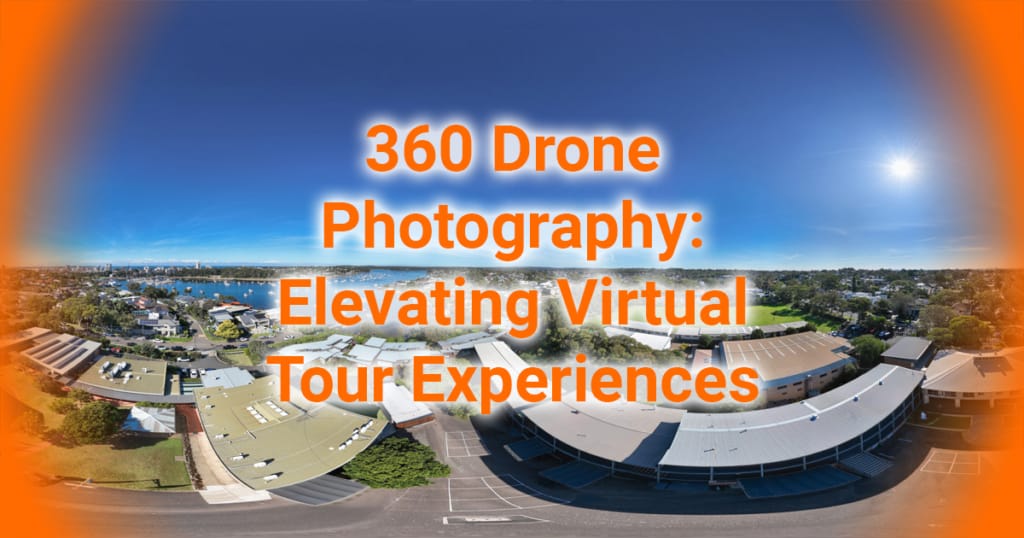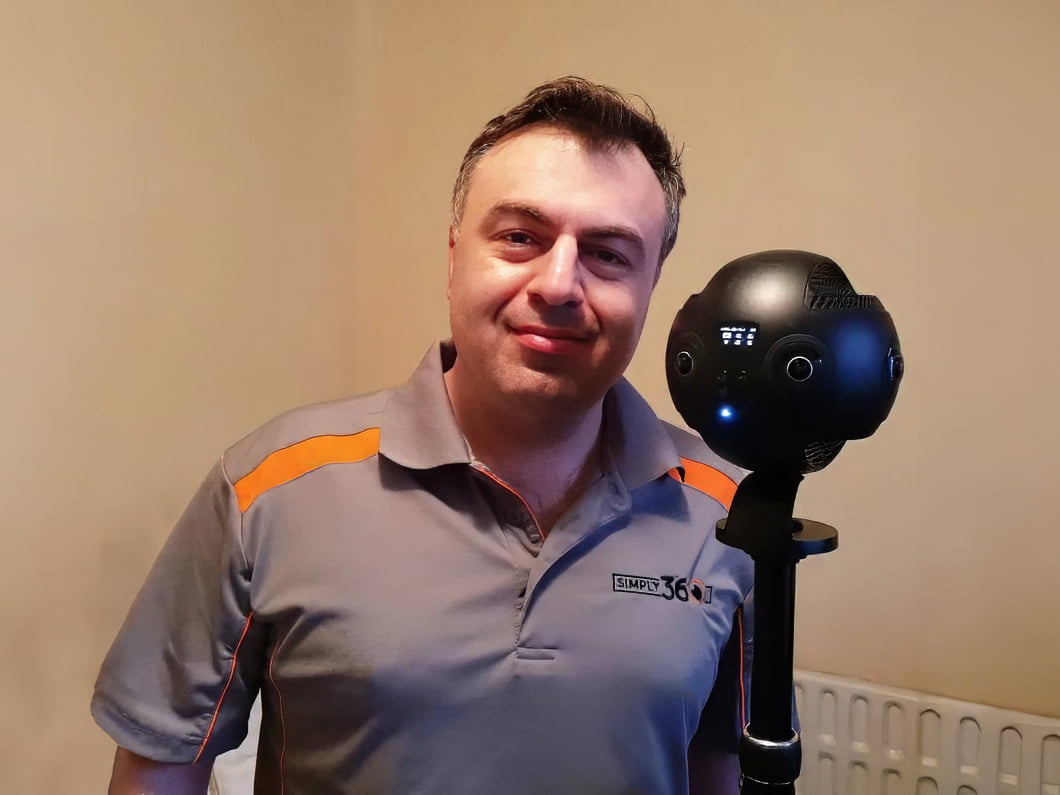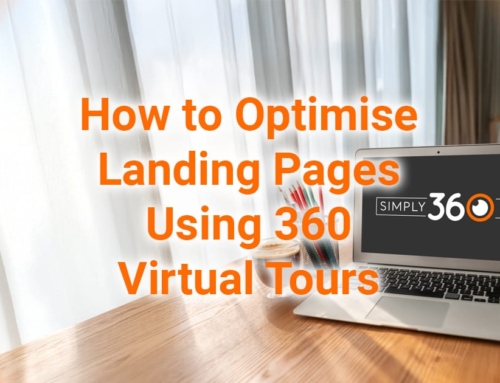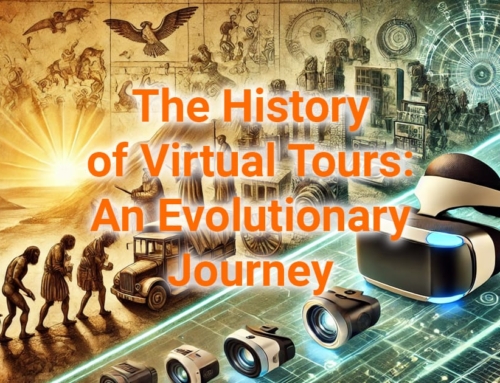How businesses and institutions present themselves online in an increasingly digital world can make all the difference. As consumers become more visually driven, the demand for innovative and engaging content continues to rise. 360 drone photography is at the forefront of this trend, offering a revolutionary way to showcase spaces from breathtaking aerial perspectives. By integrating 360 drone photography into virtual tours, organisations can create immersive experiences that captivate and engage their audiences, setting themselves apart in a crowded digital landscape.
This technology has quickly gained traction across various industries, from education to tourism, as it offers an unparalleled view of spaces that standard photography can’t provide. By allowing viewers to explore an environment from every angle, 360 drone photography enhances the storytelling capabilities of virtual tours, providing a more complete and engaging representation of a location. Whether you’re promoting a university campus, a resort, or an event venue, incorporating 360 drone photography into your virtual tour can be a game-changer, offering potential visitors a unique and memorable experience.
360 Drone Photography: Elevating Virtual Tour Experiences

What is 360 Drone Photography?
360 drone photography is a cutting-edge technique that leverages the capabilities of drones equipped with advanced cameras to capture total panoramic views from the air. Unlike traditional drone photography, which typically provides static images from a single angle, 360 drone photography offers a complete, spherical view of a location. This means that viewers can explore the scene from all directions, gaining a deeper and more comprehensive understanding of the space.
The process involves capturing high-resolution images from multiple angles, stitched together using specialised software to create a seamless 360-degree panorama. The result is a fully immersive image that allows viewers to navigate through the space as if they were physically present. This technology is particularly effective for large or complex environments where a single image or video cannot fully convey the scale and layout of the space.
The benefits of 360 drone photography are numerous. Not only does it provide a broader perspective, but it also brings out the finer details that might otherwise go unnoticed. For example, a university campus captured through 360 drone photography can showcase the relationships between different buildings, the layout of outdoor spaces, and the surrounding landscape in a way that traditional photography cannot achieve. This comprehensive view can be crucial for helping prospective students, parents, and visitors understand the full scope of the environment.
The Integration of 360 Drone Photography in Virtual Tours
Virtual tours have become a staple in many industries, offering a convenient and engaging way for potential customers or clients to explore a location from their homes. By integrating 360 drone photography into these tours, businesses can take the experience to the next level, providing a more immersive and dynamic experience that traditional photography and videography cannot match.
Integrating 360 drone photography into virtual tours allows for seamlessly incorporating aerial views into the overall tour experience. For example, a user navigating a virtual tour of a resort can start with a breathtaking aerial view of the entire property before zooming in to explore individual buildings, rooms, and amenities. This provides a more complete picture of the location and helps create a sense of scale and context that is often missing from traditional virtual tours.
In the education sector, schools and universities can use 360-degree drone photography to showcase their campuses in a way that highlights both the beauty and functionality of their spaces. Prospective students and their families can gain a better understanding of the layout and size of the campus and its relationship to the surrounding area. This can be particularly valuable for large campuses, where it can be difficult to convey the full scope of the environment through traditional means.
For the tourism industry, 360-degree drone photography offers a way to showcase a destination’s natural beauty and unique features. Aerial views of a resort, for example, can highlight its proximity to beaches, mountains, or other natural attractions, providing potential visitors with a compelling reason to choose that destination over others. Additionally, by integrating these views into a virtual tour, businesses can create a more engaging and interactive experience that encourages users to explore the site more.
Advantages of Using 360 Drone Photography in Virtual Tours
The advantages of integrating 360-degree drone photography into virtual tours are numerous and far-reaching. It offers both practical and experiential benefits that can significantly enhance the tour’s effectiveness.
- High-Resolution Imagery and Panoramic Views: One of the most significant advantages of 360 drone photography is the level of detail it captures. High-resolution images allow viewers to zoom in and explore every aspect of the scene, providing a sense of presence and scale that static photos cannot achieve. This is particularly important for large or complex spaces, where traditional photography might need help to convey the full extent of the environment. The panoramic views offered by 360 drone photography provide a comprehensive look at the location, allowing users to see how different areas connect and interact with each other.
- Increased Viewer Engagement and Satisfaction: The interactive nature of 360 drone photography is another key advantage. Unlike traditional images or videos, which are passive experiences, 360 drone photography allows viewers to actively engage with the content, exploring different angles, zooming in and out, and navigating through the space as if they were physically present. This level of interactivity keeps viewers engaged for extended periods, increasing the likelihood that they will fully explore the tour and absorb the presented information. As a result, this can lead to higher satisfaction levels and a greater likelihood of converting interest into action, whether that means booking a stay at a resort, enrolling in a university, or simply spending more time on a website.
- Enhancing Storytelling and Brand Experience: Storytelling is a crucial aspect of effective marketing, and 360 drone photography provides a powerful tool for improving this narrative. By incorporating aerial views into a virtual tour, businesses can create a more compelling story about their location or service. For example, a historic site tour can begin with an aerial view that provides context for the location before diving into the details of individual buildings or landmarks. This approach makes the tour more engaging and helps reinforce the brand’s message and identity.
- Cost-Effectiveness and Efficiency in Content Creation: While 360 drone photography may seem like a significant investment, it is a cost-effective solution for businesses looking to maximise their content marketing efforts. Once captured, 360 drone photography can be repurposed across various platforms, from websites to social media, making it a versatile tool for content creation. Additionally, creating a comprehensive and immersive virtual tour in a single shoot can save time and resources compared to traditional content creation methods, which might require multiple shoots or the production of separate materials for different platforms.
- Improved Spatial Understanding and Orientation: One of the most practical advantages of 360 drone photography is its ability to improve spatial understanding and orientation within a virtual tour. For large or complex spaces, such as university campuses, resorts, or event venues, it can be difficult for users to grasp the size and layout of the environment through traditional photography alone.
- However, by incorporating aerial views, users can see how different areas connect and relate, providing a clearer understanding of the space. This improved spatial awareness can make the virtual tour experience more intuitive and enjoyable, helping users navigate the space more efficiently and making them more likely to engage with the content.
See the Big Picture with Aerial Views
One of the standout features of 360-degree drone photography is its ability to connect large spaces and provide a bird’ s-eye view that enhances the overall virtual tour experience. When users view a property or campus from the air, they better understand its size, layout, and the relationships between different areas. This aerial perspective is particularly valuable for large or complex environments, where it can be challenging to convey the full scope of the space through traditional photography.
For example, consider a user exploring a virtual tour of a large school campus. From the ground, it might be challenging to grasp the relationships between different buildings or understand the overall layout of the campus. However, when viewed from the air, the entire campus becomes focused, with the connections between buildings, outdoor spaces, and surrounding areas visible. This aerial view provides a sense of scale and helps users orient themselves within the space, making it easier to navigate the virtual tour and explore different areas.
The ability to see the big picture is particularly important for businesses and institutions that want to convey the size and scope of their environment. For example, a resort might use 360 drone photography to showcase its extensive grounds, including pools, gardens, and recreational areas. By providing an aerial view of the entire property, potential guests can get a better sense of the resort’s layout and the proximity of different amenities, making it easier for them to envision themselves enjoying the space.
This enhanced spatial understanding is beneficial not only for the user but also for the business or institution offering the virtual tour. By providing a more intuitive and engaging experience, 360-degree drone photography can help build trust and confidence in the brand, increasing the likelihood of converting interest into action.
Case Study: St Aloysius College Cronulla
Double-click on the virtual tour for St Aloysius College Cronulla to make it go fullscreen, or click here.
The impact of 360 drone photography is best illustrated through real-world examples, such as the virtual tour project for St Aloysius College Cronulla. Initially, Simply 360 created a standard virtual tour of the school’s facilities and grounds, offering prospective students and parents a comprehensive look at the campus. However, after the school rebranded, they decided to enhance the tour to reflect their new identity and provide a more engaging experience.
This enhancement involved updating the existing tour with new branding, reshooting areas that had undergone changes, and adding a stunning 360 drone shot of the entire campus. The addition of this aerial view transformed the tour, providing a breathtaking perspective of the school’s location on a clear day in Sydney, Australia. This new view not only made the tour more visually appealing but also helped users better understand the size and layout of the campus.
The aerial view allowed prospective students and parents to see the relationships between different buildings, outdoor spaces, and surrounding areas, providing a clearer sense of the school’s layout. This improved spatial understanding made it easier for users to navigate the virtual tour, explore different places, and envision themselves as part of the school community.
The impact of the enhanced virtual tour was immediate. Prospective parents and students could see the school grounds, giving them a more comprehensive view of the environment. This improved their orientation within the virtual tour and made the experience more engaging and memorable. The addition of 360 drone photography elevated the tour from a simple virtual experience to an immersive journey that captured the essence of the school and its surroundings.
Maximising Marketing Potential with 360 Drone Photography
In today’s competitive digital landscape, businesses and institutions need to find innovative ways to stand out and capture the attention of their target audience. 360 drone photography offers a powerful tool for achieving this, providing stunning visuals that can be leveraged across various marketing channels.
One of the most significant advantages of 360-degree drone photography is its versatility. The panoramic aerial images captured by drones can be used in virtual tours and various other marketing materials, including websites, social media, promotional videos, and print materials. This flexibility makes 360-degree drone photography a valuable asset for any business looking to create a cohesive and compelling brand narrative.
For example, a resort might use 360 aerial images on its homepage to instantly convey the beauty and expanse of its property. These images can also be shared on social media, where they are likely to stand out in a crowded feed and attract more likes, shares, and engagement. In promotional videos, 360 drone photography can provide a dynamic opening shot that sets the stage for the rest of the content, capturing the viewer’s attention from the beginning.
In addition to enhancing individual marketing materials, 360 drone photography can also help to create a consistent visual theme across all of a brand’s channels. By using the same aerial images in different formats, businesses can reinforce their brand identity and create a more cohesive and memorable experience for their audience.
Creating Consistency in Branding and Visual Storytelling
Consistency is a key element of effective branding, and 360 drone photography provides a powerful tool for maintaining a unified visual identity across all marketing channels. By using consistent aerial imagery, businesses can reinforce their brand identity and create a cohesive story that resonates with their audience.
For example, a university might use 360 drone shots of its campus across its website, brochures, and social media, creating a consistent visual theme that strengthens its brand message. This consistent imagery makes the brand more recognisable and enhances the overall storytelling, making the brand’s narrative more compelling and engaging.
In addition to reinforcing brand identity, consistent use of 360 drone photography can also enhance the effectiveness of marketing campaigns. By creating a unified visual experience across all channels, businesses can ensure that their audience receives a consistent message, regardless of where they encounter the brand. This helps build trust and credibility with the audience, increasing the likelihood of converting interest into action.
Moreover, the use of 360 drone photography in visual storytelling allows businesses to create more immersive and engaging narratives. Whether showcasing the beauty of a resort, the scale of a university campus, or the unique features of a historic site, aerial imagery can add a new dimension to the story, making it more compelling and memorable.
Conclusion
Incorporating 360 drone photography into virtual tours offers many benefits, from enhancing user experience and engagement to maximising marketing potential and reinforcing brand identity. This innovative technology provides viewers with immersive, panoramic views that go beyond traditional photography, offering a deeper connection to the space and a more engaging online experience.
Whether you’re in education, tourism, or any other industry, integrating 360-degree drone photography into your virtual tours can be a game-changer, providing a unique and memorable experience for your audience. By leveraging the power of this technology, businesses and institutions can create more compelling narratives, improve user engagement, and stand out in a crowded digital landscape.
To discover how Simply 360 can help you harness the power of 360 drone photography for your business, contact us today. Call us at 02 9674 9090 or email us at info@simply360.com.au to get started.
Have you experienced the impact of 360 drone photography in a virtual tour? How do you think it enhances the viewer’s experience? We’d love to hear your thoughts! Don’t forget to check out the comments section below and join the discussion.








Leave A Comment